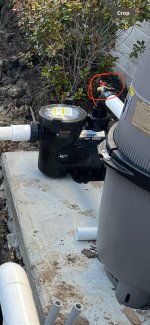Wow that's a tough situation. I'd want to be there at the very least to check plaster thickness while they're applying. If there's an area that looks thin check with a toothpick. If they know you're checking you probably won't have any issues. Plaster application is a very fluid process. There's not much time to fix things so make sure they have everything they need if the builder's not on site. What does your contract say about your obligations and his for start up? Who tests the water adds the acid? What's their process for maintaining pool water chemistry. There are several ways to do this.
You can read up on it here. All builders seem to do this a little differently. And most seem to involve the owner to some degree or have a subcontractor that does all their pools. All those things matter a lot. If they're not done right you may not see it until your plaster is failing early in 5 years instead of 15. If it was me, I'd be there and delay plaster if needed unless you are very certain they'd do everything as well as you would. Does your contract have a "time is of the essence" clause?
Looks like you don't have any bond coat. Technically most plasters claim to have binders so bond coat's not needed but not all. I would find your plaster's website and see what's recommended and talk to your builder about this if the plaster company recommends it. In my case it was ~0.5% of the pool cost to do it so I did.
Chris







